Studies show that 94% of first impressions relate to a website’s design, making it crucial to have an appealing and effective web design for marketing. A well-designed website can increase credibility and trust, leading to higher sales. Web design plays a significant role in improving user experience, which is essential for driving conversions.
When revamping your website’s design, consider integrating responsive design, making your calls to action (CTAs) stand out, using high-quality visuals, creating an organized navigation, and utilizing white space. All of these elements can contribute to a visually appealing and user-friendly website that boosts sales.
Key Takeaways:
- A well-designed website is essential for creating a positive first impression and improving credibility.
- An effective web design can enhance user experience, leading to higher conversions and sales.
- Integrating responsive design, standout CTAs, high-quality visuals, organized navigation, and white space can contribute to a visually appealing and user-friendly website.
- An expert web design for marketing is crucial for boosting sales and staying ahead of the competition.
- Ongoing monitoring and optimization of your web design are necessary to meet the evolving needs of your audience.
The Impact of Web Design on Sales
When it comes to boosting sales, web design plays a crucial role. Did you know that 75% of opinions on website credibility come from its design? First impressions matter, and a visually appealing and user-friendly web design can help build credibility, engage users, and improve their overall experience on your website.
Research shows that 89% of people shop with a competitor after a poor user experience. That’s a significant loss of potential sales! Investing in web design that prioritizes user experience is essential for keeping visitors engaged and preventing them from looking elsewhere.
“75% of opinions on website credibility come from web design.”
When designing your website, it’s crucial to focus on creating an SEO-friendly web design. Consider factors like responsive design, page load speed, and mobile-friendliness. These aspects are not only important for user experience, but they also contribute to your website’s overall performance and search engine visibility.
A responsive design ensures that your website adapts seamlessly to different devices, providing a consistent and enjoyable browsing experience. Users shouldn’t have to pinch and zoom to view content on their smartphones or tablets. Optimizing your website for mobile devices is essential in today’s mobile-driven world.
Page load speed is another critical factor in web design for marketing. Slow-loading websites can lead to high bounce rates and lost sales opportunities. By optimizing your website’s load speed, you ensure that users don’t get frustrated and navigate away before even seeing what you have to offer.
“89% of people shop with a competitor after a poor user experience.”
To illustrate the impact of web design on sales, let’s use a table to compare data from two websites:
| Website A | Website B | |
|---|---|---|
| Visitors | 10,000 | 10,000 |
| Bounce Rate | 64% | 24% |
| Conversion Rate | 1% | 5% |
| Sales | 100 | 500 |
In this example, Website B with a visually appealing design, optimized user experience, and faster page load speed outperforms Website A in every aspect. The lower bounce rate and higher conversion rate translate into significantly more sales. This demonstrates the direct impact of web design on sales and the importance of investing in an effective design strategy.
Remember, the goal of web design for marketing is to create a website that not only looks great but also drives sales. By incorporating SEO-friendly design principles and optimizing user experience, you can enhance your website’s performance, engage users, and ultimately increase your sales.

Next, we’ll explore how to improve web design to increase sales. Stay tuned!
Improving Web Design to Increase Sales
When it comes to boosting sales, a well-designed website is a crucial asset. To enhance your web design for marketing and maximize conversions, we recommend incorporating several key elements.
Responsive Design
First and foremost, integrating responsive design into your website is essential. With the increasing use of mobile devices, it’s crucial that your site adapts seamlessly to different screen sizes. By ensuring optimal user experience on both desktop and mobile devices, you can capture a larger audience and increase sales.
Stand Out CTAs
Your calls to action (CTAs) are the driving force behind conversions. To encourage users to take the desired action, make sure your CTAs stand out on the page. Use contrasting colors, bold fonts, and compelling copy to attract attention and guide users towards making a purchase or filling out a form.
High-Quality Visuals
A visually appealing website can greatly enhance the user experience. Incorporate high-quality visuals, such as images and videos, to showcase your products or services effectively. Visuals can engage users and create a lasting impression, increasing the likelihood of conversions and sales.

Organized Navigation
Creating an organized navigation is essential to help users find the information they need quickly and easily. A clear and intuitive navigation menu enhances the user experience, guiding visitors to the relevant sections of your website. This organized approach ensures users can access the information they need to make informed purchasing decisions and ultimately increases sales.
Utilize White Space
White space, or negative space, can play a critical role in web design. It helps create a clean and focused layout that allows users to focus on the key elements of your website. By utilizing white space strategically, you can provide clarity and improve the overall user experience, increasing the chances of conversion and driving more sales.
Incorporating these elements into your web design strategy can help you create a conversion-focused and marketing-centric website. By continually optimizing your web design to improve user experience and increase sales, you can stay ahead of the competition and achieve your business goals.
The Role of User Experience in Web Design
When it comes to web design for marketing, user experience (UX) plays a crucial role in driving sales. UX focuses on creating an enjoyable and easy interaction between visitors and your website, ultimately leading to higher conversions. By prioritizing user-friendly web design and creating a visually appealing experience, you can build trust with users and increase the likelihood of sales.
A user-friendly web design is essential for keeping visitors engaged and guiding them towards their desired actions. Prioritizing simplicity and ease of navigation allows users to find information quickly and easily. By creating intuitive menus, clear call-to-action buttons, and a logical layout, you can ensure a seamless user experience that encourages conversions and sales.
In addition to user-friendliness, the visual appeal of your web design also plays a significant role in driving sales. A visually appealing website not only captures users’ attention but also creates a positive first impression of your brand. By utilizing high-quality visuals, such as captivating images and videos, you can enhance the overall user experience and effectively showcase your products or services.
Optimizing your website’s UX goes beyond just aesthetics; it also involves creating a seamless and enjoyable experience for users. By ensuring fast page load speeds, implementing responsive design for mobile devices, and minimizing distractions, you can enhance user satisfaction and increase the chances of conversions and sales.
To illustrate the importance of user experience in web design for marketing, take a look at the statistics below:
75% of users base their opinion of a website’s credibility on its design.
88% of online consumers are less likely to return to a site after a bad experience.
94% of users’ first impressions are related to web design factors.
The data clearly indicates that investing in user-friendly and visually appealing web design is crucial for maximizing sales opportunities and fostering positive user experiences.
Impact of User Experience on Sales
| Statistics | Percentage |
|---|---|
| Users basing opinion on website credibility | 75% |
| Online consumers unlikely to return after bad experience | 88% |
| First impressions related to web design factors | 94% |

Based on the data above, it’s clear that a user-friendly and visually appealing web design is essential for driving sales. By creating a seamless and enjoyable user experience, you can build credibility, engage visitors, and increase the chances of conversions and sales.
The Relationship Between SEO and Web Design
When it comes to driving sales, the relationship between SEO and web design is undeniable. A well-designed website that is optimized for search engines can significantly improve visibility and attract more organic traffic. By incorporating SEO best practices into your web design, you can optimize your website for marketing success.
Optimized Web Design for Marketing
Optimized web design for marketing involves various factors that contribute to better search engine rankings. Here are some key elements to consider:
- Page Load Speed: Fast page load speeds are essential for user experience and search engine optimization. A quick-loading website ensures that users do not get frustrated waiting for your pages to load and encourages them to stay on your site longer.
- Mobile-Friendliness: With the increasing use of mobile devices, having a mobile-friendly web design is crucial. Mobile-friendliness is a significant ranking factor for search engines, and having a responsive design ensures that your website looks and functions well on all devices.
- Clean Code: Search engines prefer clean, well-structured code. A website with clean code is easier for search engine bots to crawl and index, improving your website’s overall visibility in search engine results.
By optimizing these aspects of your web design, you can create an SEO-friendly website that is favored by search engines, resulting in higher rankings and increased visibility.
“Optimized web design ensures that your website is easily discoverable in search engine results, helping you reach your target audience and drive more sales.”
The Impact of SEO-Friendly Web Design
Implementing SEO best practices in your web design can have a direct impact on your website’s performance and sales. By improving your search engine rankings and visibility, you can attract more qualified organic traffic to your website. This increased traffic provides more opportunities for conversion and ultimately drives more sales for your business.
An SEO-friendly web design also enhances the user experience by making your website more user-friendly and accessible. When users can easily find what they’re looking for and navigate through your website effortlessly, they are more likely to engage with your content and take the desired actions – whether it’s making a purchase, filling out a form, or contacting your business.
The Value of SEO and Web Design Collaboration
Bringing together SEO and web design expertise is crucial to achieving optimal marketing results. By collaborating with SEO professionals and web designers who understand the intricate relationship between the two, you can create a powerful online presence that drives sales and delivers a seamless user experience.
Image here:
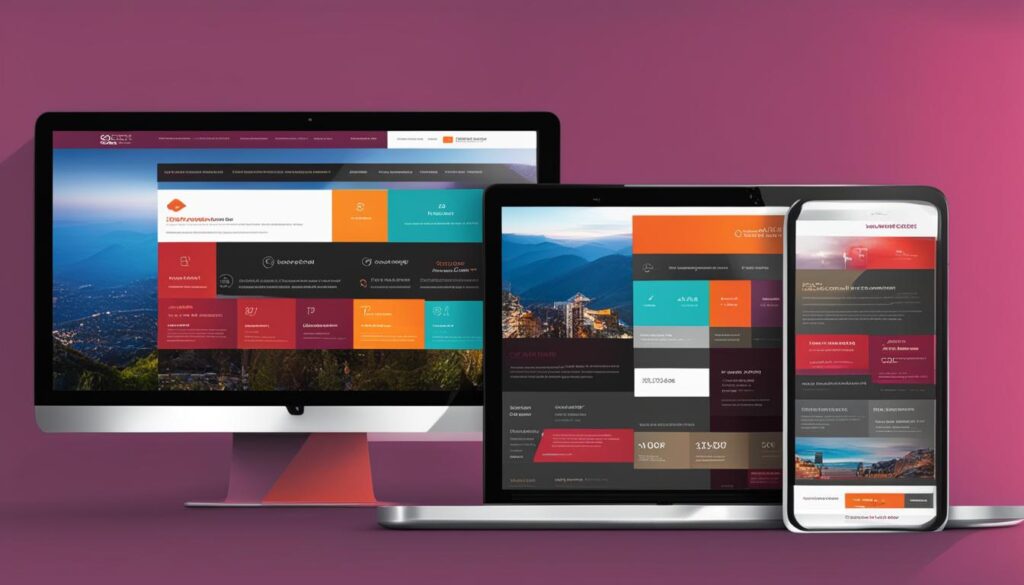
The Impact of Mobile-Friendly Web Design on Sales
With the increasing use of mobile devices, having a mobile-friendly web design is crucial for driving sales. Mobile users make up a significant portion of website traffic, and if your website is not optimized for mobile devices, you risk losing potential customers.
A responsive web design ensures that your website adapts to different screen sizes and provides a seamless user experience on mobile devices. By prioritizing mobile-friendly design, you can cater to a larger audience and increase sales.
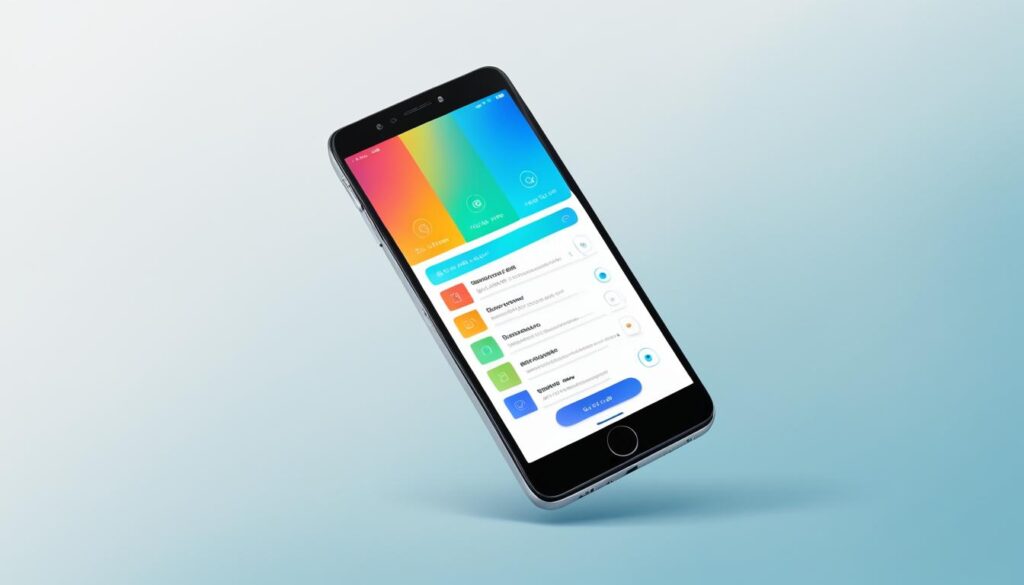
Creating a mobile-friendly web design involves implementing design elements that enhance usability and engagement on mobile devices. Here are some key considerations:
- Responsive design: Design your website in a way that it automatically adjusts its layout and content to fit different screen sizes. This ensures that your website looks and functions well on smartphones and tablets.
- Fast load times: Optimize your website’s performance for mobile devices by optimizing image sizes, minimizing code, and utilizing caching techniques. This improves page load speed and prevents user frustration.
- Intuitive navigation: Make sure your website’s navigation is easy to use on mobile devices. Use clear and concise menus, streamlined navigation bars, and strategically placed navigation elements to guide users through your website effortlessly.
- Clear calls to action (CTAs): Place your CTAs prominently on mobile devices to encourage users to take desired actions. Make them easily tappable and visually distinct to capture users’ attention.
By incorporating these mobile-friendly design principles, you can provide a user-friendly experience to mobile users, leading to higher engagement, conversions, and ultimately, increased sales.
The Importance of Visual Appeal in Web Design for Marketing
In today’s digital landscape, having a visually appealing web design is paramount for successful marketing efforts. A visually appealing website can capture users’ attention and create a positive first impression, setting the stage for increased engagement and conversions. At [Your Company Name], we understand the significance of visual appeal in web design for marketing.
High-quality visuals, such as images and videos, can effectively communicate your brand’s message and showcase your products or services. By incorporating visually stunning graphics, you can create an immersive user experience that leaves a lasting impact on your audience. Engaging visuals not only enhance the aesthetic appeal of your website but also establish credibility and reinforce your brand identity.
“A picture is worth a thousand words.” – Unknown
At [Your Company Name], we prioritize the use of compelling visuals to create an emotional connection with your target audience. Our team of experienced designers carefully curates visually striking elements that align with your brand’s personality, effectively conveying your values and offerings.
Furthermore, a visually appealing web design can significantly improve user experience, making it easier for visitors to navigate your website and find the information they need. By ensuring an intuitive and user-friendly interface, you can reduce bounce rates and encourage users to explore your website further, increasing the likelihood of conversions and sales.
As part of our conversion-focused web design approach, we optimize the visual appeal of your website while maintaining a seamless user experience. Our designs strike a perfect balance between aesthetics and functionality, ensuring that your website not only looks beautiful but also drives tangible business results.
“Design is not just what it looks like and feels like. Design is how it works.” – Steve Jobs
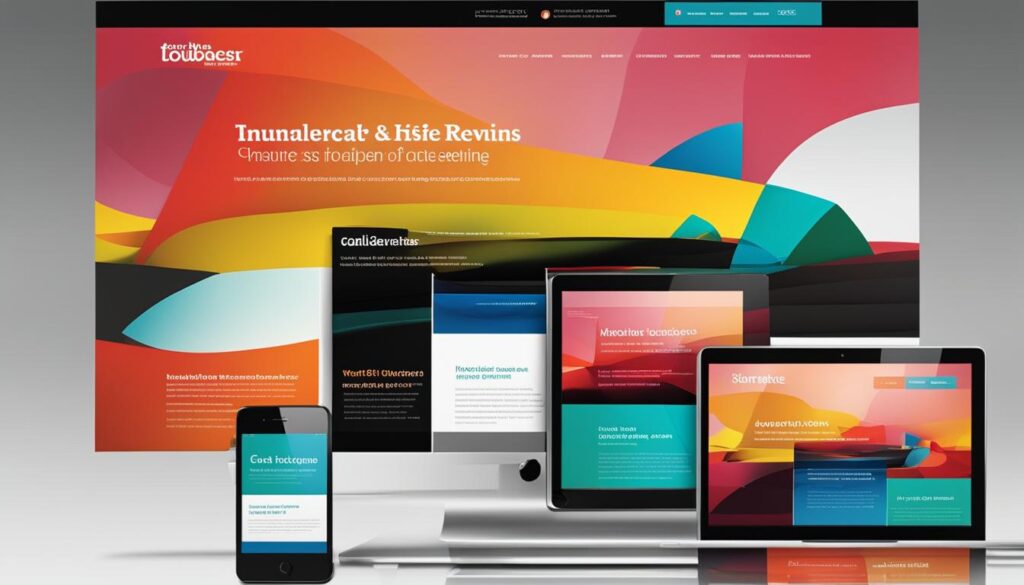
Allow us to transform your web design for marketing into a visually captivating and conversion-focused masterpiece. Unleash the power of visual appeal to captivate your audience, communicate your brand’s message effectively, and drive sales. Partner with [Your Company Name] today and let our expert team create a visually stunning web design that elevates your brand above the competition.
The Role of Navigation in Web Design for Marketing
In web design for marketing, navigation plays a critical role in guiding users towards the information they need, ultimately leading to higher sales. An organized and user-friendly navigation system ensures that visitors can easily find their way around your website and take the desired actions, such as making a purchase or contacting your business.
By structuring your navigation effectively, you create a seamless user experience that engages visitors and encourages them to explore further. A clear and intuitive navigation menu should be prominently placed on your website, allowing users to access different sections and pages without any confusion.
Organizing your navigation involves categorizing your content into logical groups and creating clear labels for each section. By grouping related information together, you help users find what they’re looking for quickly and effortlessly. For example, if you run an e-commerce website, you can categorize products by type, brand, or price range.
It’s also important to consider the placement and design of your navigation elements. Prioritize the most important pages or sections by placing them in the main menu or using prominent call-to-action buttons. Make use of dropdown menus or expandable submenus to provide additional navigation options while keeping the main menu clutter-free.
When designing your navigation, remember to keep it consistent across all pages of your website. This ensures that users can easily navigate between different sections without having to relearn how to find information on each page.
Key Principles for Creating an Organized Navigation
- Clear and Concise Labels: Use descriptive and easy-to-understand labels for your navigation menu items. Avoid jargon or industry-specific terms that may confuse users.
- Logical Hierarchy: Group related pages and sections together in a logical hierarchy. Place important pages at the top level of your navigation or highlight them as primary menu items.
- Visual Cues: Utilize visual cues such as icons, arrows, or hover effects to enhance the usability of your navigation and provide users with feedback as they interact with your website.
- Search Functionality: Include a search bar in your navigation to give users an alternative way to find what they’re looking for, especially if you have a large website with extensive content.
By creating an organized and user-friendly navigation system, you make it easier for visitors to navigate your website and find the information or products they need. This ultimately leads to a positive user experience, increased engagement, and higher conversion rates.
Next, we’ll explore the impact of page speed on web design for marketing. A fast-loading website is crucial for ensuring optimal user experience and driving sales.
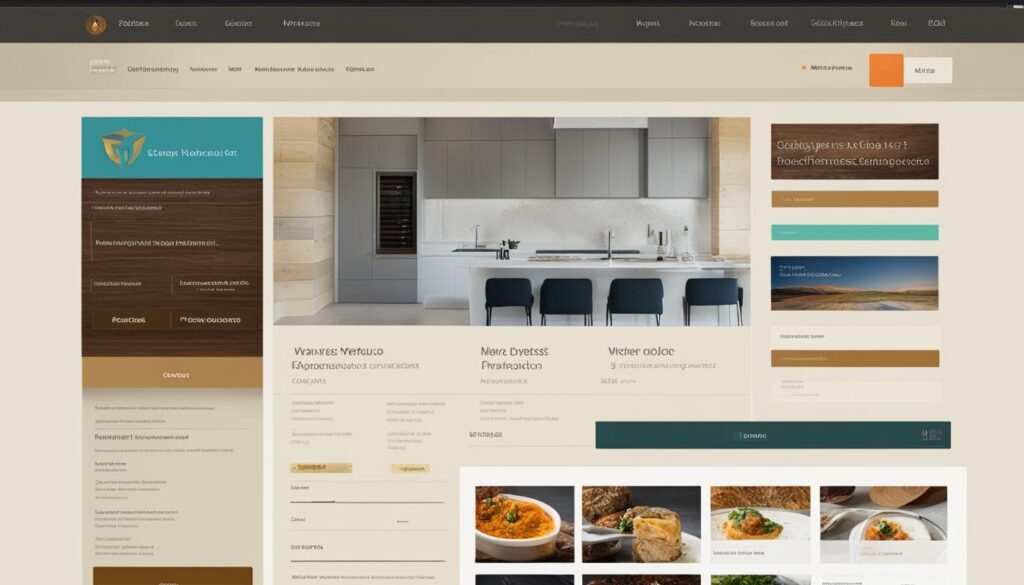
The Impact of Page Speed on Web Design for Marketing
When it comes to web design for marketing, page speed plays a crucial role in attracting and retaining users. A slow-loading website can have a detrimental impact on your sales, leading to high bounce rates and missed opportunities. In today’s fast-paced digital landscape, users expect instant access to information and seamless browsing experiences. In fact, studies show that 53% of mobile users abandon a website if it takes longer than three seconds to load.
Optimizing your website for fast page load speeds is essential to meet the expectations of your target audience and drive conversions. By delivering a quick and efficient browsing experience, you can keep users engaged and increase the likelihood of making a purchase or taking a desired action.
So, how can you ensure that your website loads at lightning speed? Here are some key factors to consider:
- Image Optimization: Images are often the main culprits when it comes to slowing down website load times. By properly optimizing your images, such as compressing them and using the appropriate file formats, you can significantly reduce their file sizes without compromising on visual quality.
- Caching: Implementing caching techniques can greatly improve page load speeds. By storing static versions of your webpages, caching allows users to access previously loaded content without the need to retrieve it from the server again, resulting in faster load times.
- Minimizing Code: Bloated and unnecessary code can slow down your website’s performance. By minimizing and optimizing your HTML, CSS, and JavaScript code, you can reduce file sizes and improve page load speeds.
By implementing these optimization strategies, you can create a fast-loading website that enhances user experience and maximizes your sales potential. Remember, every second counts!
| Impact of Page Speed on Web Design for Marketing | Statistics and Insights |
|---|---|
| High bounce rates | A slow-loading website can lead to high bounce rates, where users leave your site without taking any action. This can result in lost sales opportunities. |
| Improved user experience | A fast-loading website provides users with a seamless and efficient browsing experience, keeping them engaged and more likely to convert. |
| Mobile optimization | Page speed is even more critical for mobile users. Studies show that 70% of consumers will abandon a website if it takes longer than five seconds to load on their mobile device. |
| SEO rankings | Page speed is a ranking factor in search engine algorithms. Having a fast-loading website can positively impact your search engine rankings, leading to increased visibility and potential sales. |

Conclusion
Having an expert web design for marketing is essential for boosting sales. A well-designed and user-friendly website can improve credibility, engage users, and increase conversions. By incorporating responsive design, optimizing visual appeal, prioritizing user experience, and considering SEO best practices, you can create a web design that drives sales for your business.
Remember to continuously monitor and optimize your web design to stay ahead of the competition and meet the evolving needs of your audience. Regularly analyze user behavior, track conversion rates, and make data-driven adjustments to improve your website’s performance. By staying proactive and responsive to your customers’ needs, you can maintain a competitive edge and drive sustained sales growth.
Investing in an expert web design for marketing is a crucial step towards success in the digital landscape. Your website is often the first point of contact for potential customers, and a professional, user-friendly design can make a lasting impression. By prioritizing usability, aesthetics, and optimization, you can create an exceptional online experience that converts visitors into loyal customers.
Remember, a powerful web design is just the beginning. It is important to align your web design strategy with your overall marketing goals and continuously adapt to the ever-changing digital landscape. Whether it’s optimizing for mobile devices, enhancing page load speed, or improving user experience, a holistic approach is key to driving sales and achieving long-term success.
FAQ
How does web design impact sales?
Studies show that 94% of first impressions relate to a website’s design, making it crucial to have an appealing and effective web design for marketing. A well-designed website can increase credibility and trust, leading to higher sales.
How can I improve my web design to increase sales?
When revamping your website’s design, consider integrating responsive design, making your calls to action (CTAs) stand out, using high-quality visuals, creating an organized navigation, and utilizing white space. All of these elements can contribute to a visually appealing and user-friendly website that boosts sales.
What is the role of user experience (UX) in web design?
User experience (UX) focuses on making each interaction with your website enjoyable and easy for users. A user-friendly web design that prioritizes simplicity and ease of navigation can keep visitors engaged and increase the likelihood of conversions. A visually appealing web design can make a positive impression and build trust with users.
How are SEO and web design related?
SEO and web design are closely related when it comes to driving sales. A well-designed website that is optimized for search engines can improve visibility and attract more organic traffic. By incorporating SEO best practices into your web design, you can improve your website’s rankings, increase visibility, and ultimately drive more sales.
Why is mobile-friendly web design important for sales?
With the increasing use of mobile devices, having a mobile-friendly web design is crucial for driving sales. Mobile users make up a significant portion of website traffic, and if your website is not optimized for mobile devices, you risk losing potential customers. A responsive web design ensures that your website adapts to different screen sizes and provides a seamless user experience on mobile devices.
How does visual appeal impact web design for marketing?
Visual appeal is a crucial aspect of web design for marketing. A visually appealing website can capture users’ attention, engage them, and communicate your brand’s message effectively. By investing in a visually appealing web design, you can create a positive impression with users and increase the likelihood of conversions and sales.
What is the role of navigation in web design for marketing?
Navigation plays a critical role in web design for marketing. An organized and user-friendly navigation allows users to find the information they need quickly and easily. By structuring your navigation effectively, you can guide users to the relevant sections of your website and lead them towards the desired actions, such as making a purchase or contacting your business.
How does page speed impact web design for marketing?
Page speed is a crucial factor in web design for marketing. A slow-loading website can lead to high bounce rates and lost sales opportunities. By optimizing your website for fast page load speeds, you can provide users with a seamless and efficient browsing experience. A fast-loading website improves user experience and increases the likelihood of conversions and sales.
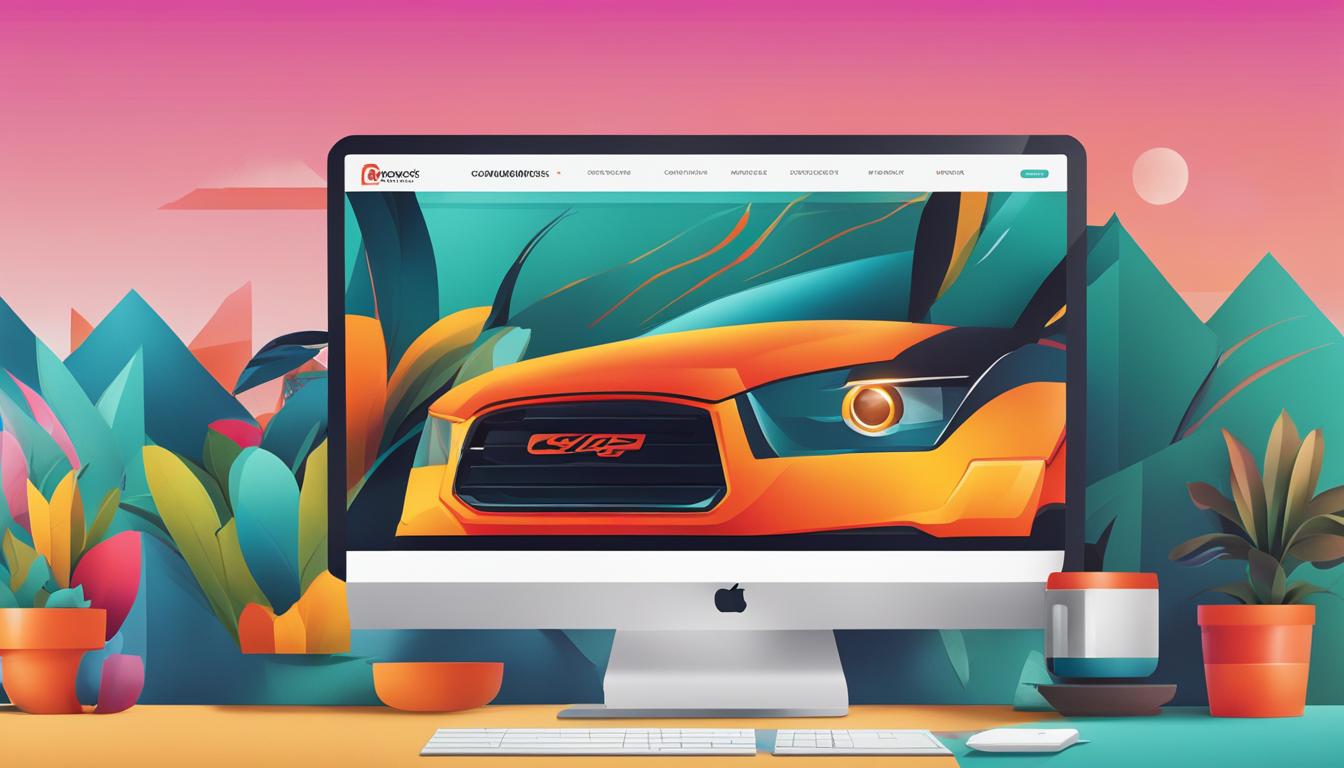
Leave a Reply